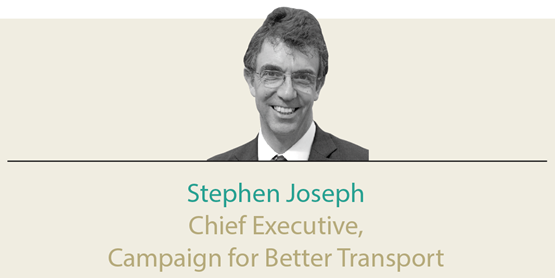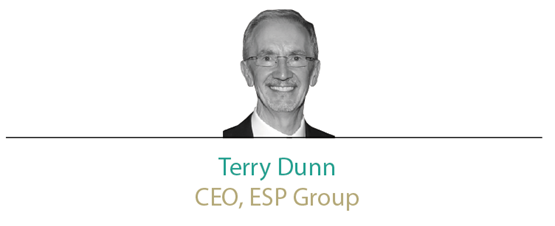
Tom Ingall has accurately captured the increasing importance of social media in the transport world. He wrote it before the British Airways computer systems meltdown, where social media amplified the problems faced by thousands of stranded passengers. As Tom says, problems like that can damage brands and companies hugely, sometimes for years.
I think there are three areas which Tom is underplaying. First, the railway is still playing catch-up in technology terms. Too often, when there is disruption on the railways, passengers are better informed than staff on trains or at stations. Giving staff iPads, and the feeds to those with some clear messages, is done by some operators but not all. Having good responses on Twitter and Facebook, and using these channels proactively, is vital.
Second, social media can help improve the railway. Stakeholder engagement by operators still tends to be based on meetings and discussion with rail users, with online communication as an add-on. This is also true for consultation on franchise specifications and improvements by the DfT and others. Social media can radically improve this by getting new ideas and allowing an interactive exchange between the railway and the users and communities it serves.
But it doesn’t stop there. Social media can tap into the skills of frustrated rail users and use them to come up with improvements. A good example is when someone on ABC’s network pointed out that the ticket machines at Haywards Heath were difficult to use, and that the best-value fares were only available on the third or fourth screen down. Since this frustrated traveller designs user interfaces for computers for a living, he went on to explain exactly how the ticket machines could be reconfigured to make them more usable and to give people easier access to the best-value fare, and I think ended up explaining this to the RDG. This kind of interaction helps improve the railway for everyone.
The third issue is trust. And this is not just about the big events, it’s about the day-to-day experience of using the railway. Transport Focus did some work on this a few years ago (www.transportfocus.org.uk/research-publications/publications/passengers-relationship-with-the-rail-industry/) and found that the headline National Rail Passenger Survey scores significant levels of distrust of individual train operators. As Tom says, if you can measure sentiment in real time using social media - in addition to those he quotes, sites such as CommuteLondon (commutelondon.com/resources/TwitterTrainsofThought2015.pdf) have been able to aggregate user views of operators based on Twitter - it will be possible to see if overall trust can be affected by particular measures taken by train companies.
Social media is here to stay. It can be treated as something to resist and react to, but in a customer-facing industry it can also be used to interact with users and to improve what’s on offer, as well as people’s perceptions of the railway.

Is the railways’ own Flight 3411 moment waiting for an unsuspecting TOC? Are executives looking nervously over their shoulders in fear of a viral video splashing over every media
outlet? If not, should they be?
Well, have a look at Anne Wafula Strike’s Twitter feed for January. The story of the British wheelchair racer’s terrible experience may not have been captured in second-by-second detail, but when she went public over her experience, via a range of channels, I would argue that Flight 3411 met the UK rail industry head-on.
There are, of course, differences. After 3411 United’s share value plummeted, its initial response was defensive, and the video made the horrific situation vivid and real. However, the UK-wide coverage of Strike’s ordeal, the narrative of her harrowing story, plus the very human nature of the problem - a story of humiliation and inequity - was probably on par.
This begs the question: should we be worried about the social media genie? In Disney’s Aladdin, the genie could certainly create problems, but was always well intentioned - unlike Jafar, who was hellbent on overtaking the kingdom through the power of the genie. There is a parallel - I believe social media can be used for good.
New channels provide more opportunities to garner feedback. As an industry dealing with millions of people every day, we need to think like the customer. Unfortunately, we can‘t be on every train and on every platform to see what it’s like for each customer. Therefore, every feedback channel must be embraced to hear people’s stories, to allow us to understand what is happening. We need to understand the frustrations and the pinch-points. By doing so, we can head off any potentially huge problems - often caused by our own policies and methods.
We also need to be aware of what works well. I am always pleased to Tweet about the good service I see from staff - like the Train Manager on Virgin Trains East Coast who always genuinely seems pleased to see me at 0548! If we acknowledge excellent behaviour and customer service, we can praise and reward staff as well as encourage others to push the benchmark further. This improves standards and results in new, happy and loyal customers. We celebrate this at Journeycall, our contact centre in Arbroath, with our ‘Journeywall’, where we post all the positive comments and messages from customers. It’s a great way to boost staff and morale.
So, let’s not worry too much. Social media can be the ECG, checking our services rhythm, in respect of what’s happening out there: both the good and the bad. We need to know.
How do we make sense of it all? The analytics regarding social media can certainly be powerful, but we need to remember the overall goal. What are we trying to achieve? Is it to create positive change, or to simply talk to our customers more?
As an industry, we can also measure this directly. For example, let’s use Patient Opinion (now ‘Care Opinion’) as a proof-point. This non-profit feedback platform for health services allows patients to tell their stories about health care experience. Social care organisations receive these stories direct, and can respond and make necessary changes. And guess what? Most customers are positive and understanding of operational problems, and just want to improve things. It is about fostering honest and meaningful conversations between patients and health services.
As the genie said in Aladdin: “Thank you for choosing Magic Carpet for all your travel needs. Don’t stand until the rug has come to a complete stop.” Social media is certainly a ride – but well worth taking. Hop on board… and mind the gap.
- ESP is a provider of back office management systems for transport companies.











